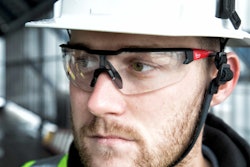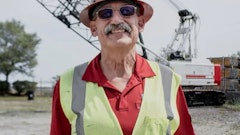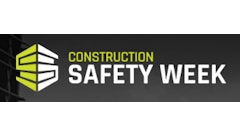
Summertime means intense heat and challenging working conditions for many Americans. In the construction trade, the inevitable result is a rise in serious injuries and fatalities (SIFs) — and a renewed focus on physical safety measures.
However, as we pay more attention to the prevention of heat-related illnesses and accidents during the summer, a crucial aspect of workplace health is often overlooked – mental health.
The psychological well-being of workers is just as important as their physical safety, but it typically receives much less attention. Addressing this gap is essential, especially in high-stress industries like construction, where the suicide rate for men in construction is five times greater than the rate for all fatal work-related injuries.
To safeguard workers’ physical and psychological safety, contractors need to implement more training, regular feedback collection and accessible mental health resources.
The Dual Threats of Heat and Mental Health in Construction
Construction workers are particularly susceptible to mental health struggles and the effects of summer heat due to the demanding nature of their work and the environments they operate in.
The physical labor required in construction is often grueling and performed under extreme weather conditions, including high temperatures during the summer months. Prolonged exposure to heat can lead to heat-related illnesses such as heat exhaustion and heat stroke, which contributes to increased stress and anxiety in addition to the physical health impacts.
The construction industry is also characterized by long hours, irregular schedules and high job insecurity, all of which can exacerbate mental health issues. The pressure to meet tight deadlines and the physical dangers inherent in construction work can lead to chronic stress and burnout. Workers often face significant physical demands, and when coupled with the psychological pressures of the job, it creates a perfect storm for mental health struggles. The high rate of injuries and fatalities in the industry adds another layer of stress.
Furthermore, the stigma surrounding mental health in the construction industry can prevent workers — nearly 94% of whom are men — from seeking the help they need. There’s often a cultural expectation to remain tough and resilient, which discourages employees from expressing vulnerability or admitting to mental health challenges. This reluctance to seek support can exacerbate the problem.
The solution? It’s up to contractors to take proactive steps to diminish stigma and create a work environment where mental health is prioritized alongside physical safety.
3 Essential Ways to Reduce Heat-Related Impacts
With temperatures on the rise and workers’ stress levels escalating, it’s time for employers to play a more proactive role in employee safety and risk prevention. From providing comprehensive training to gathering regular feedback, consider the following ways you can foster a work environment that prioritizes your workers’ physical and mental well-being.
- Leverage data and analytics and offer training to spot warning signs: Your ability to accurately identify and mitigate the leading causes of SIFs hinges on the effective use of data and analytics. By analyzing past incidents, you can pinpoint specific hazards and operational inefficiencies. Data might also reveal seasonal patterns of fatigue or heat-related issues, prompting adjustments in work schedules or task assignments. It’s also important to provide workers with training on how to recognize and relieve heat-related illnesses, as well as signs of stress, anxiety and burnout.
- Promote open communication and provide support systems: Nurture a safety culture that makes workers feel comfortable reporting safety concerns without fear of retribution. Create clear, accessible channels for communication like anonymous reporting systems, regular safety meetings and open-door policies with management. Ensuring workers know their concerns will be taken seriously and addressed promptly encourages them to speak up about potential hazards or unsafe practices. It’s also important to offer mental health resources and establish peer support networks.
- Gather feedback to inform decisions: Ask for feedback from contractors and employees to nip potential safety issues in the bud. Conduct surveys, hold feedback sessions or encourage continuous input. By actively gaining feedback, you can learn valuable insights into your workforce’s day-to-day experiences and challenges, including sources of stress and factors that contribute to burnout. This feedback can uncover recurring issues, highlight areas where safety protocols may be lacking and identify specific needs for additional training or resources.
Prioritize Heat and Mental Health Safety All Summer
While the summertime heat poses significant risks to construction workers’ well-being, you can mitigate the danger by proactively implementing comprehensive safety measures.
By leveraging data and analytics to identify risks, providing accessible resources and actively gathering employee feedback, your organization can lead the charge in dispelling mental health misconceptions and seamlessly integrate mental health into routine health and safety plans



















